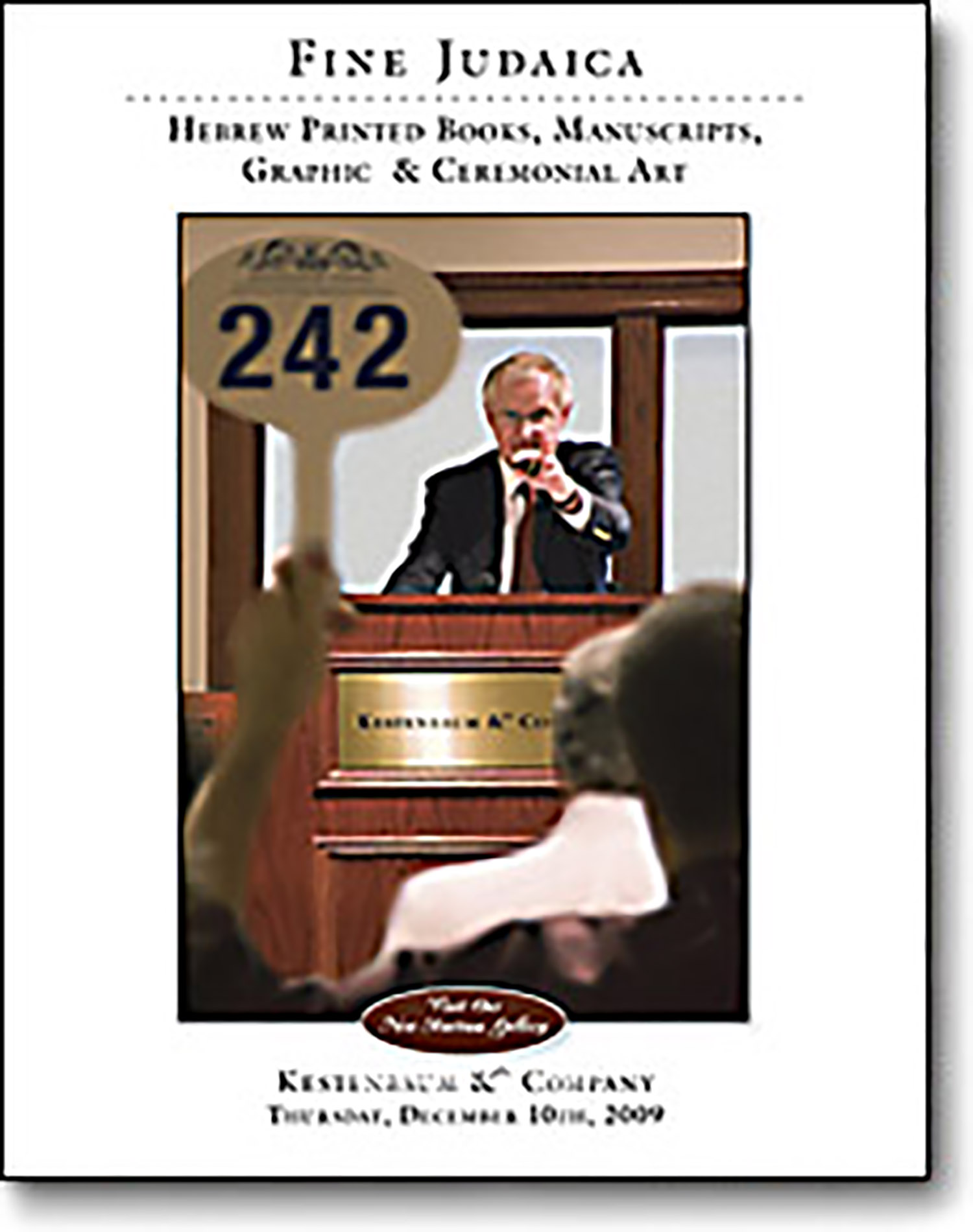Machzor mikol Hashanah [Festival Prayer Book for the Entire Year]. According to the Aschkenazic Rite

AUCTION 47 |
Thursday, December 10th,
2009 at 1:00
Fine Judaica: Hebrew Printed Books, Manuscripts, Graphic & Ceremonial Art
Lot 192
(LITURGY)
Machzor mikol Hashanah [Festival Prayer Book for the Entire Year]. According to the Aschkenazic Rite
Sabbioneta-Cremona: Tobias Foa-Vicenzo Conti 1557-1560
Est: $3,000 - $5,000
PRICE REALIZED $7,500
The printing of this magnificent Aschkenazic Machzor took two and half years to complete. Begun in Sabbioneta in 1557, in the house of Tobias Foa, it was completed in Cremona on the eve of the New Year [5]321 (1560) by Vicenzo Conti (as explained in the colophon at the end of the volume).
According to Meir Benayahu, this Machzor, as noted on the title, is a second edition of the Aschkenazic machzor printed earlier in Salonika in 1548-9 for use by the Italian Aschkenazic community of that city. However one of the novel additions to the present edition are the many kabbalistic commentaries to the prayers.
From a typographical perspective, the Sabbioneta Machzor is something of a mystery. Considering it was printed in two different cities, clearly the transition was hardly seamless. The great bibliographers, such as Steinschneider, Sonne, and Berliner tried to make sense of the way in which various letters occur in the edition. Benayahu believed he found the demarcation line between Sabbioneta and Cremona. Signatures 1 thru 36 (f.144), as well as signatures 38-39, are clearly Sabbioneta. From signature 40 (f.157) to the end is certainly Cremona. Signature 37 resembles neither Sabbioneta nor Cremona, and Benayahu reasoned that it is an imitation of the first, Salonikan edition.
To add to the confusion, it seems that the second part of the Machzor went through two printings, each marked by slight variations. In this copy the woodcut surround for the word “HaMelech” (f.303v) fits Benayahu’s “first printing” (facsimile on p. 160), whereas the historiation of the word “Ashirah” (f. 296r) conforms to Benayahu’s supposed second printing (facsimile on p. 162).
See Benayahu, HaDephus Ha’Ivri BeCremona (1971), pp. 139-178
